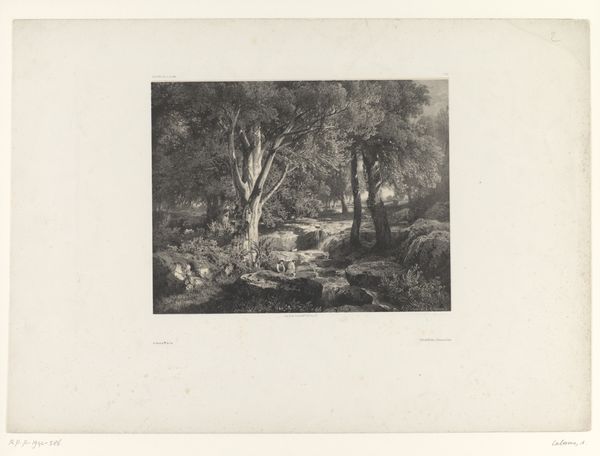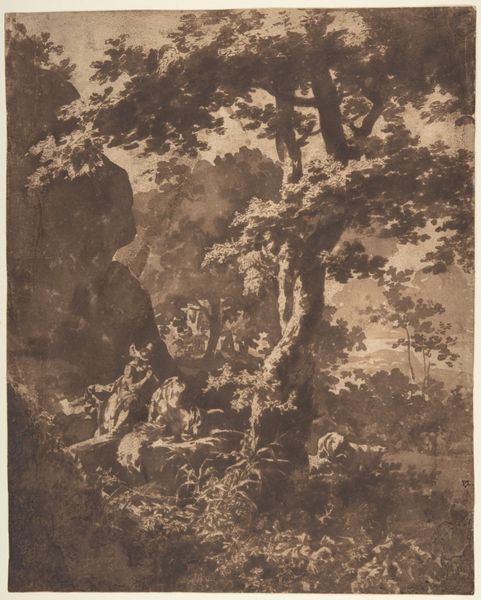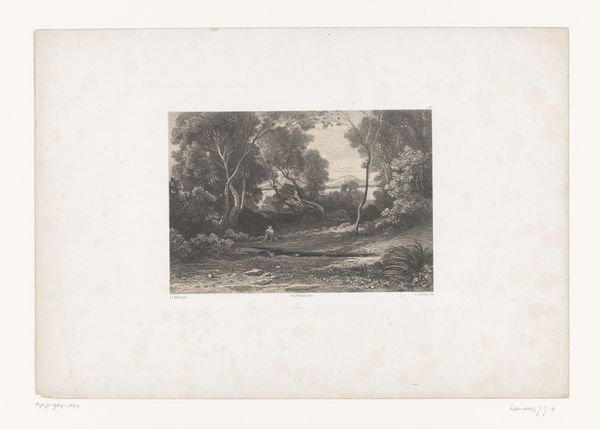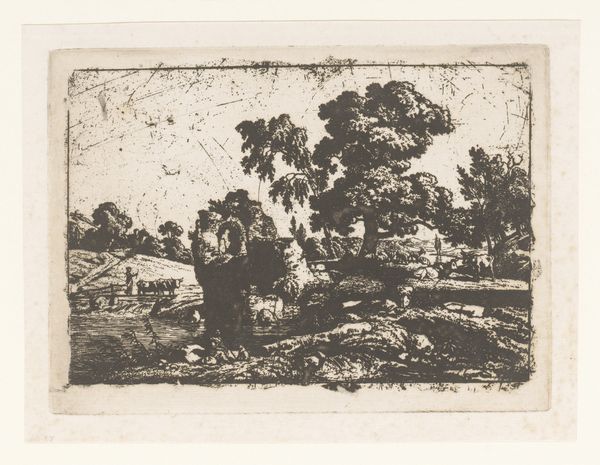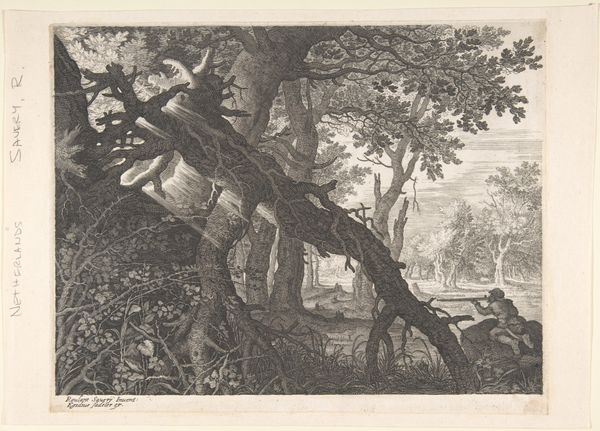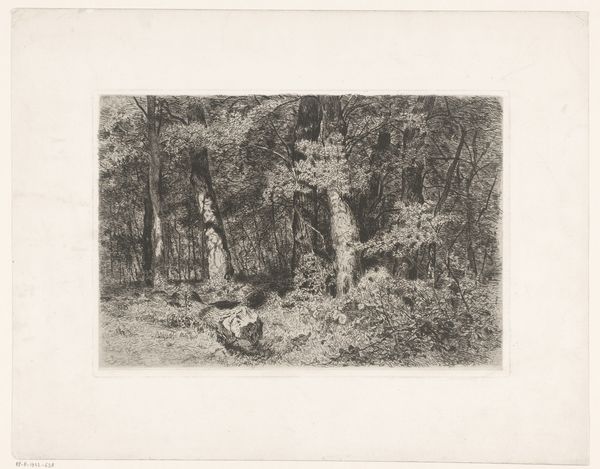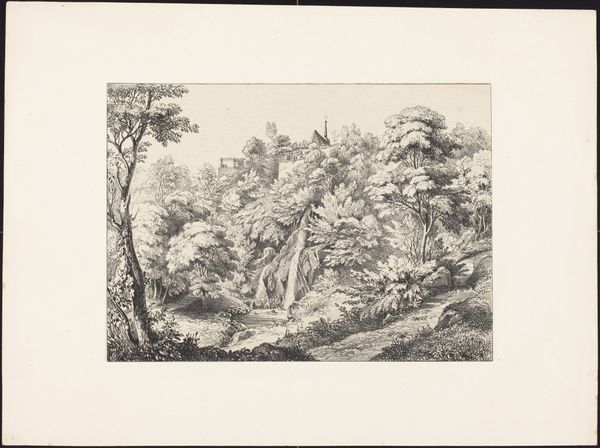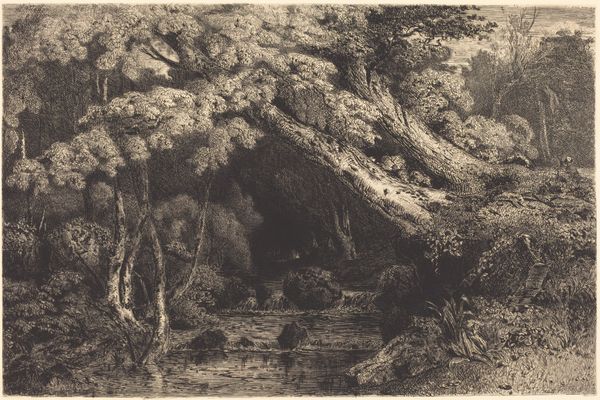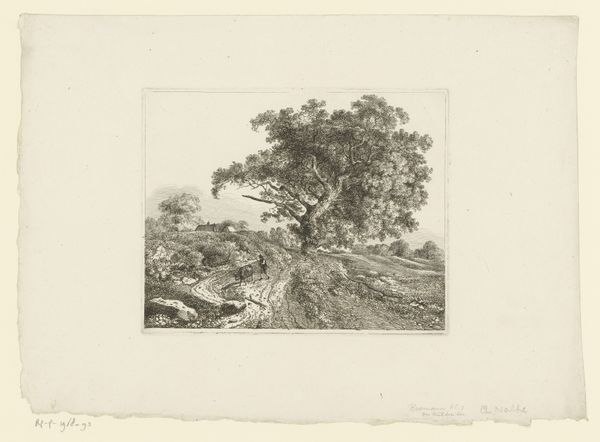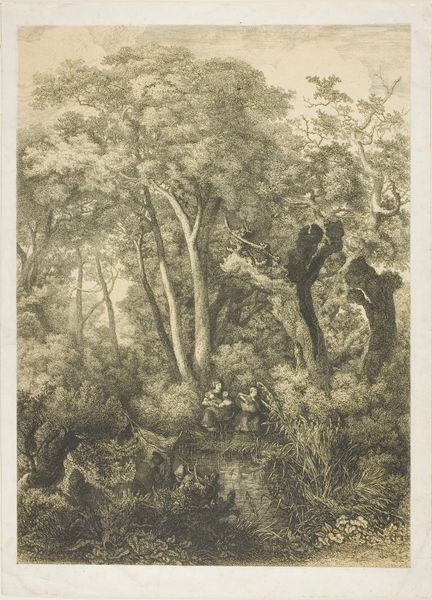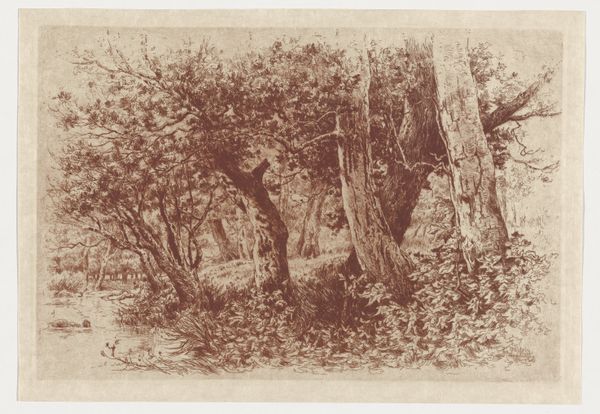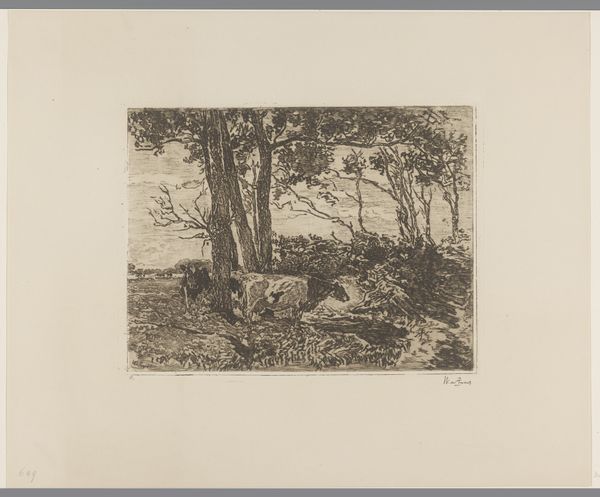
drawing, etching, plein-air, paper
#
tree
#
drawing
#
aged paper
#
toned paper
#
natural tone
#
ink paper printed
#
etching
#
plein-air
#
landscape
#
waterfall
#
paper
#
natural palette
#
realism
Dimensions: height 136 mm, width 178 mm
Copyright: Rijks Museum: Open Domain
Editor: We're looking at "Landscape with a Tree Trunk over a Waterfall" by Jean Louis Demarne, an etching from between 1762 and 1829. It has a detailed, almost dreamlike quality to it. What captures your attention in this work? Curator: For me, this piece speaks volumes about the changing perception of nature during that period. The emphasis on natural detail aligns with a burgeoning Romantic sensibility, but it’s important to remember the socio-political context. These idealized landscapes often served as a kind of visual balm, a retreat from the rapid industrialization and urbanization happening at the time. Note how Demarne frames nature as something separate from, almost untouched by, human activity, despite the figures present. Does that separation strike you as intentional? Editor: Absolutely. There are figures, but they're diminutive, almost swallowed by the landscape. It reinforces that feeling of nature’s grandeur and maybe our relative insignificance. I see it in a contemporary way too – our disconnect with nature now versus this staged “retreat” then. Curator: Exactly! And thinking about it as an etching, part of a wider print culture, allows us to consider how these images circulated. How did these scenes influence the way people viewed the countryside, even if they didn't have the opportunity to visit such places themselves? This romantic ideal then fueled certain political and social attitudes toward land use and ownership. Editor: That makes me think about how landscape art has often been used to justify particular ideologies, to show some version of control and ownership, both in that period and in contemporary artwork today. I see much more at stake than pretty landscape art, it becomes evidence of socio-political forces shaping it. Curator: Precisely. Considering this landscape in that broader context, we can see its complex role in shaping perceptions of nature and nationhood. There’s a much broader story at play within it.
Comments
No comments
Be the first to comment and join the conversation on the ultimate creative platform.
